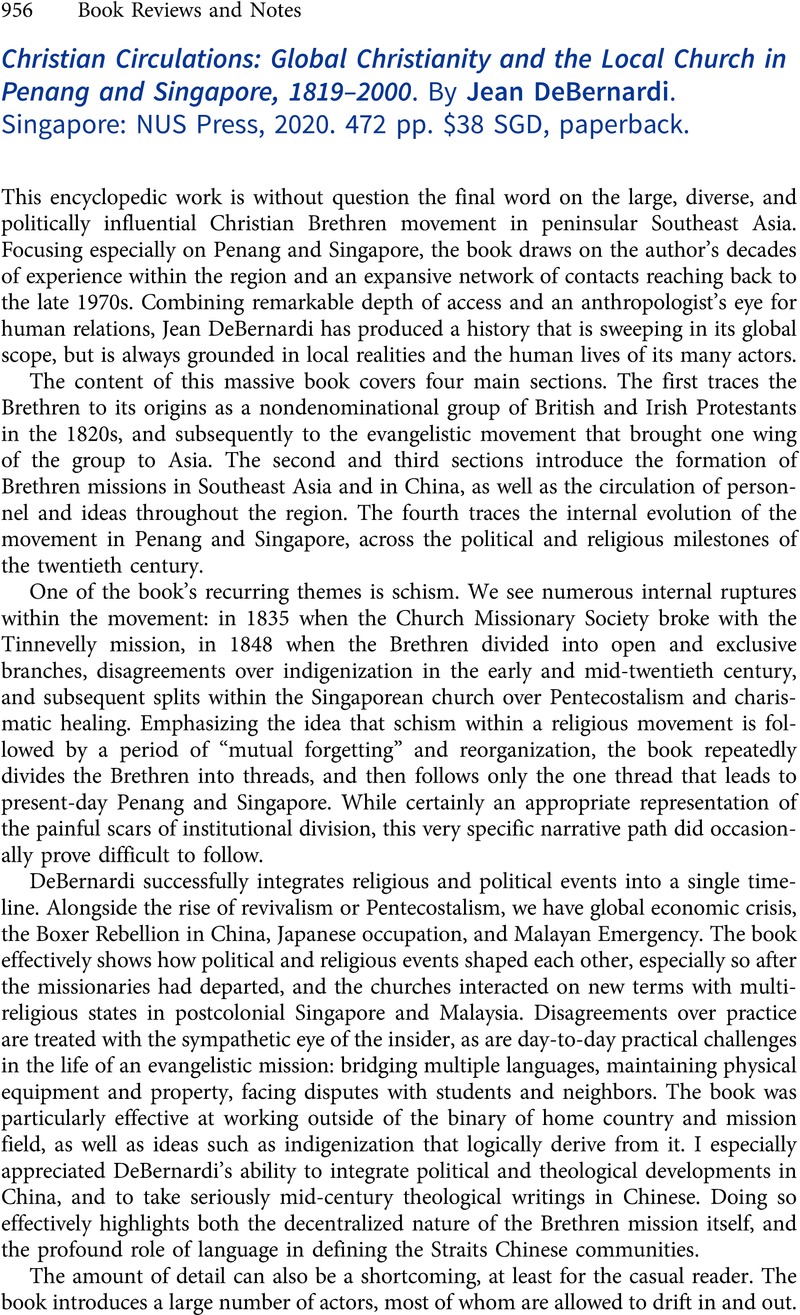No CrossRef data available.
Article contents
Christian Circulations: Global Christianity and the Local Church in Penang and Singapore, 1819–2000. By Jean DeBernardi. Singapore: NUS Press, 2020. 472 pp. $38 SGD, paperback.
Review products
Christian Circulations: Global Christianity and the Local Church in Penang and Singapore, 1819–2000. By Jean DeBernardi. Singapore: NUS Press, 2020. 472 pp. $38 SGD, paperback.
Published online by Cambridge University Press: 03 May 2023
Abstract
An abstract is not available for this content so a preview has been provided. Please use the Get access link above for information on how to access this content.

- Type
- Book Reviews and Notes
- Information
- Copyright
- Copyright © The Author(s), 2023. Published by Cambridge University Press on behalf of American Society of Church History


